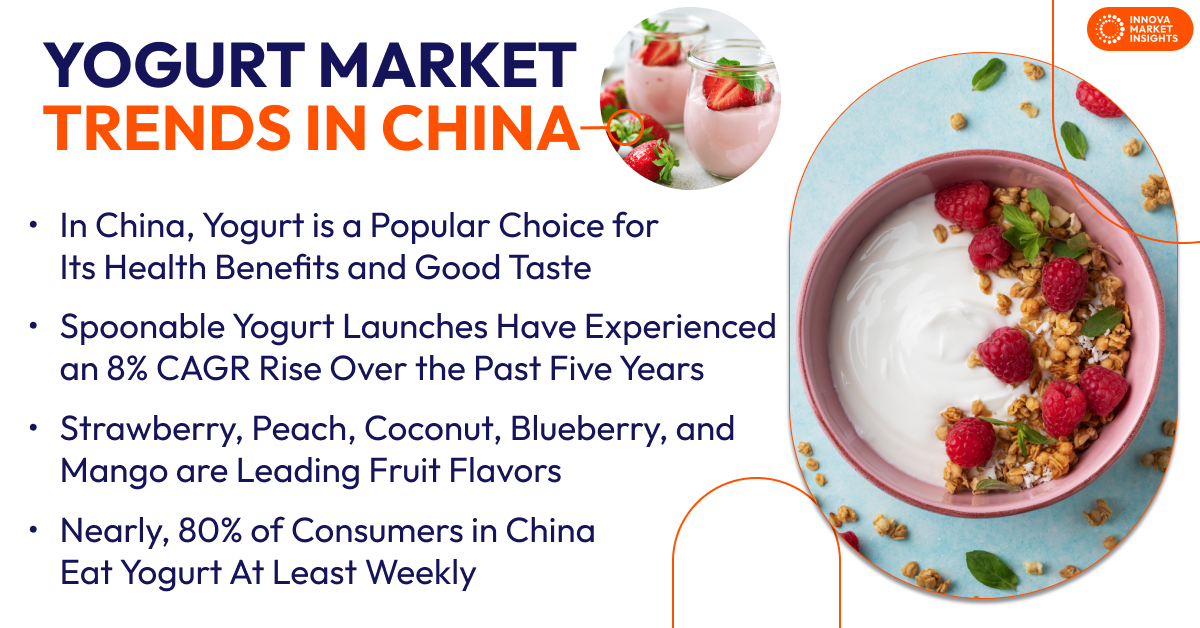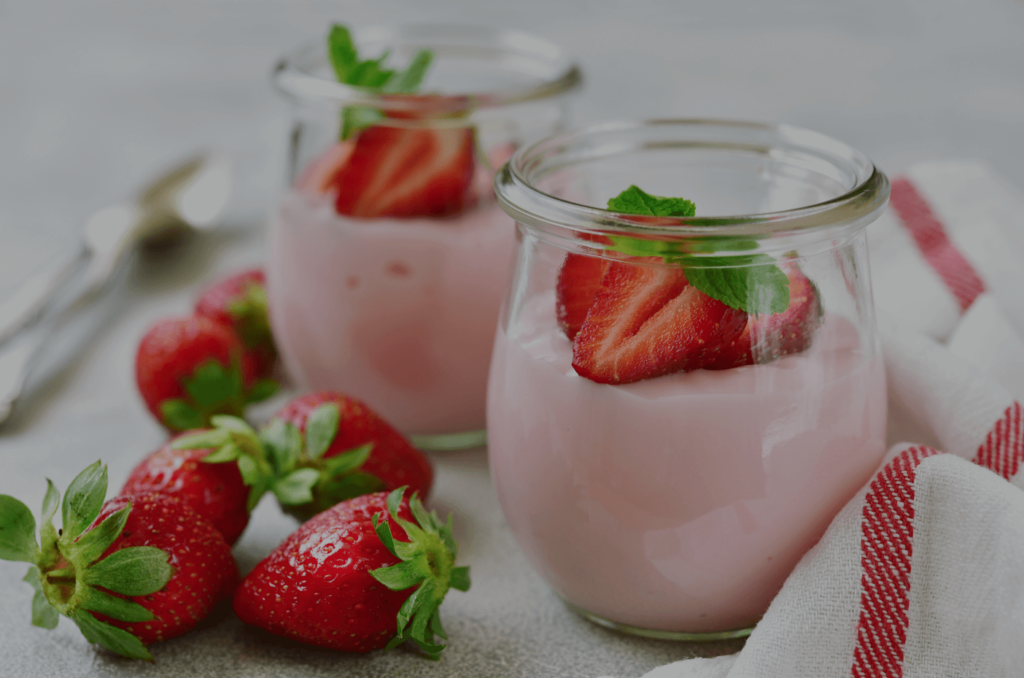October 15, 2024 – In China, dairy and dairy alternative yogurts are preferred for their balance of taste, nutrition, and versatility, catering to diverse dietary needs and evolving health trends. Innova’s 360 research into yogurt trends allows it to identify consumer preferences, product launches, and what may develop in the future.
Yogurt Market Size and Trends
The sales and volume of the China yogurt market have been steadily rising throughout the past five years, by 8% and 13% CAGR, respectively. Yogurt trends research predicts a projected growth rate of 7% CAGR in sales and 10% CAGR in volume in the next five years.
Israel is the highest country in yogurt per capita consumption. China’s per capita consumption is slightly above the global average. Hong Kong and Taiwan’s per capita consumption is low compared to the top regions.
Consumer Preferences
In China, yogurt is a popular choice for its health benefits and good taste. Consumers are influenced by high protein and product safety claims when purchasing yogurt. Over the past year, 25% of consumers purchased dairy yogurt, while non-dairy yogurt displays a lower penetration at 14%. More than a quarter of yogurt consumers have increased their consumption during this period.
Nearly 80% of consumers in China eat yogurt at least weekly. Yogurt trends research shows that most of the consumers enjoy yogurt as an afternoon snack. Non-dairy yogurt skews higher than dairy in breakfast, lunch or dinner. Dairy yogurt penetration is higher among females, high-income earners, urban dwellers, and Generation Z and Millennials. Meanwhile, non-dairy yogurt resonates more with Generation Z, those with some college education, and lower-income individuals.

Yogurt Product Launch Trends
Spoonable yogurt launches in China have experienced an 8% CAGR rise over the past five years. Dairy yogurt leads in the majority of new product launches. Meanwhile, non-dairy yogurt accounts for just 3% of total launches over the past year. Most of the dairy yogurt does not specify a type, with Greek yogurt representing 19% of launches. Emerging dairy yogurt types, such as skyr, Mongolian, goat milk, and Icelandic, are gaining attention.
High-protein claims is common in the spoonable dairy yogurt market, with a 4% rise in launches over the past year. No added sugar claims are also on the rise. However, digestion-related claims like probiotics and clean recipe claims such as no additives or preservatives are less frequent in dairy spoonable yogurt launches compared to 2019. Yogurt trends research shows that prebiotic, lactose-free, sugar-free, and limited edition claims are emerging in the market. Ethical claims in China are below average than the global average, highlighting the opportunity for growth beyond recycled or recyclable packaging mentions.
Yogurt Flavors and Ingredients
Over the past year, 46% of new spoonable dairy yogurt launches feature fruit flavors. Strawberry, peach, coconut, blueberry, and mango are leading fruit flavors. Beyond fruit, flavors like brown, nut and vanilla are also growing strongly in the space.
In terms of ingredients, dairy yogurt recipes increasingly include probiotics, stabilizers, emulsifiers, gelling agents, and protein. Less common ingredients such as sweeteners, anti-foaming agents, foaming agents, egg, salt and fats are becoming more prominent in new dairy yogurt recipes. Dairy launches are using unpasteurized milk and milk protein concentrate more often. There is a growing use of Lactobacillus bulgaricus, pectin, stevia, sucralose, and erythritol in dairy yogurt launches.
What’s Next in Dairy and Dairy Alternative Yogurt Trends?
In China, ethical concerns are becoming a priority for consumers, who expect brands to lead in nature protection, reducing carbon footprints, and offering environmentally friendly packaging. This presents an opportunity for brands to highlight on-package claims around sustainability, including the use of upcycled ingredients, renewable energy, and recyclable packaging. Additionally, brands can emphasize efforts to reduce carbon emissions, conserve water, and ensure humane animal treatment.
Over 1 in 3 consumers in China prioritize product safety claims when purchasing yogurt, with a quarter looking for natural or real ingredient claims. Brands can respond by highlighting the no additives or preservatives, or artificial flavors claims. They can also display local ingredient sourcing, organic farming, or recipes made with a limited number of natural ingredients when applicable.
Non-dairy yogurt penetration is low, with limited options in the Chinese yogurt market. However, nearly 30% of consumers increased their consumption over the past year, driven by perceived healthiness and variety. Brands can tap into this by testing consumer interest in non-dairy yogurt introductions. They can explore this growing trend by introducing non-dairy options like coconut, soy, oat, or almond-based yogurts, particularly targeting those seeking high-protein vegan alternatives like tofu.
This article is based on Innova’s Now & Next in Dairy & Dairy Alternative Yogurt in China report. This report is available to purchase or with an Innova Reports subscription. Reach out to find out more
